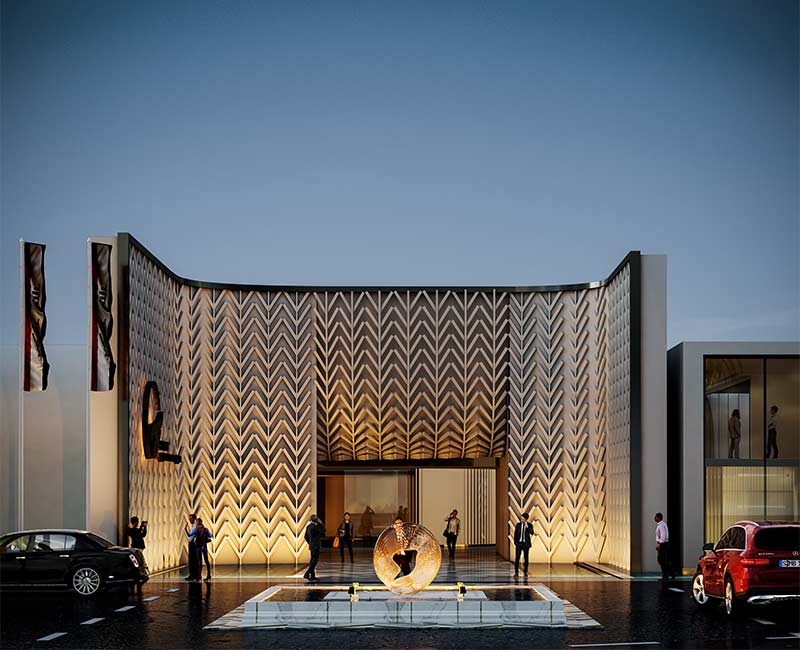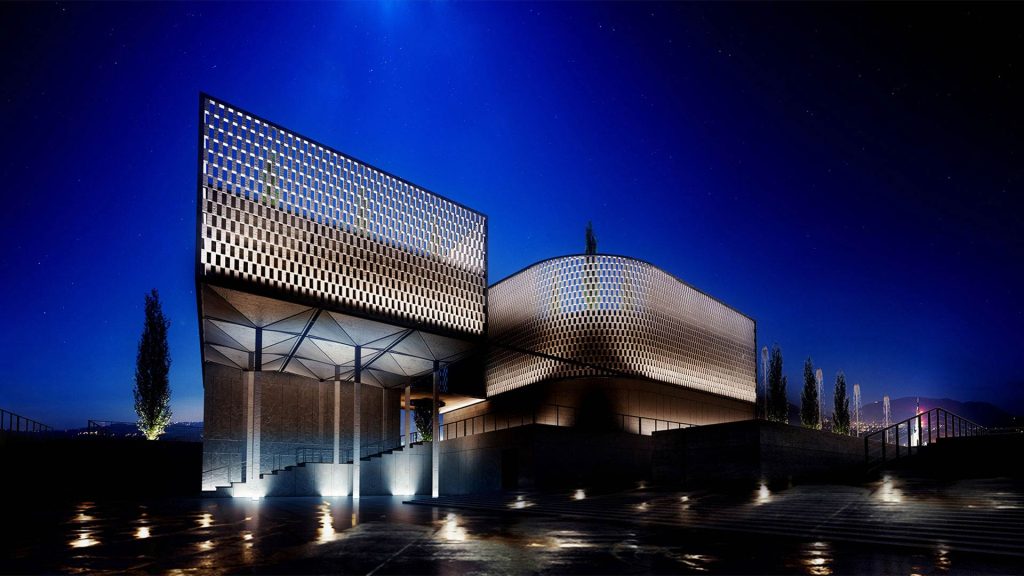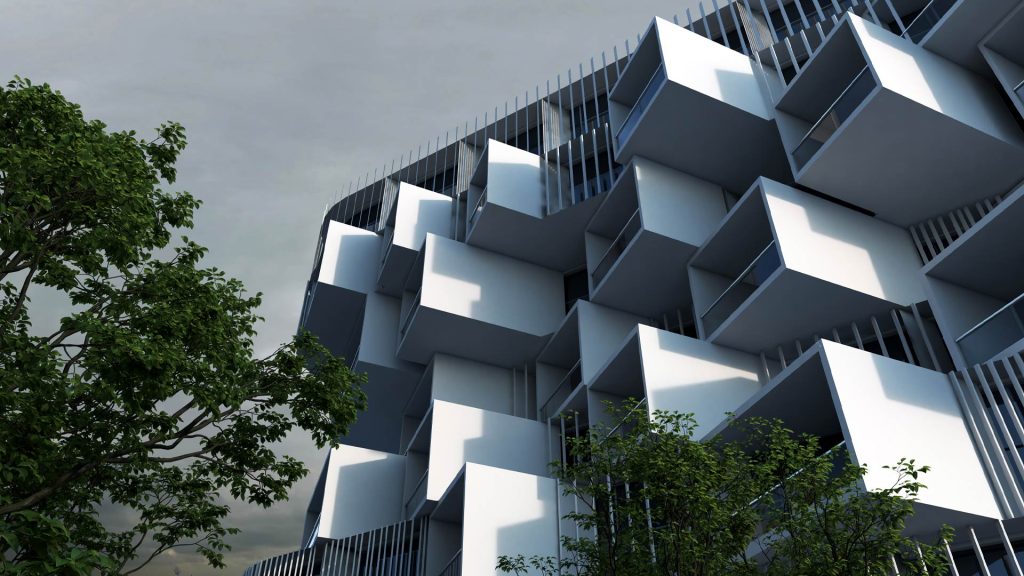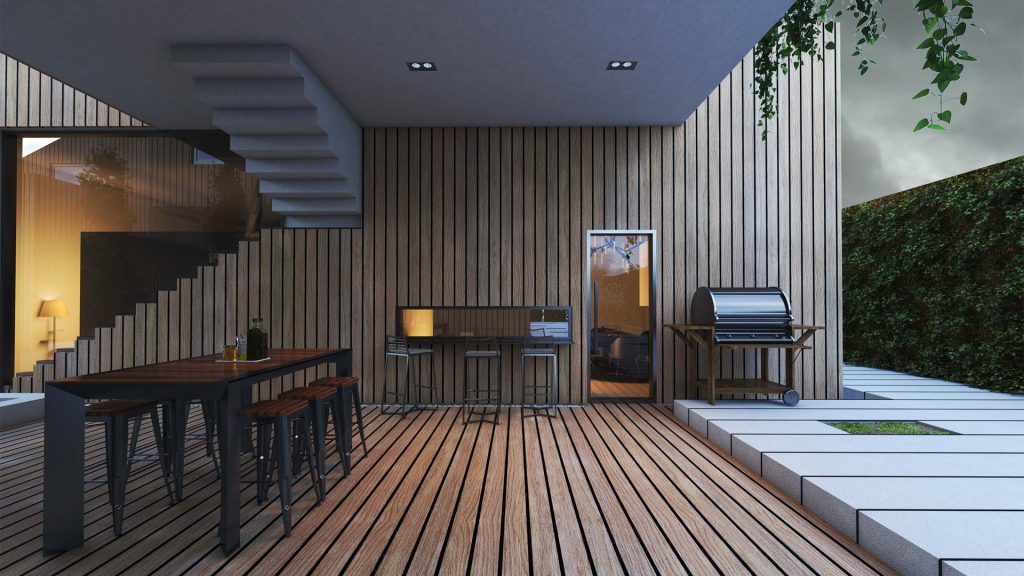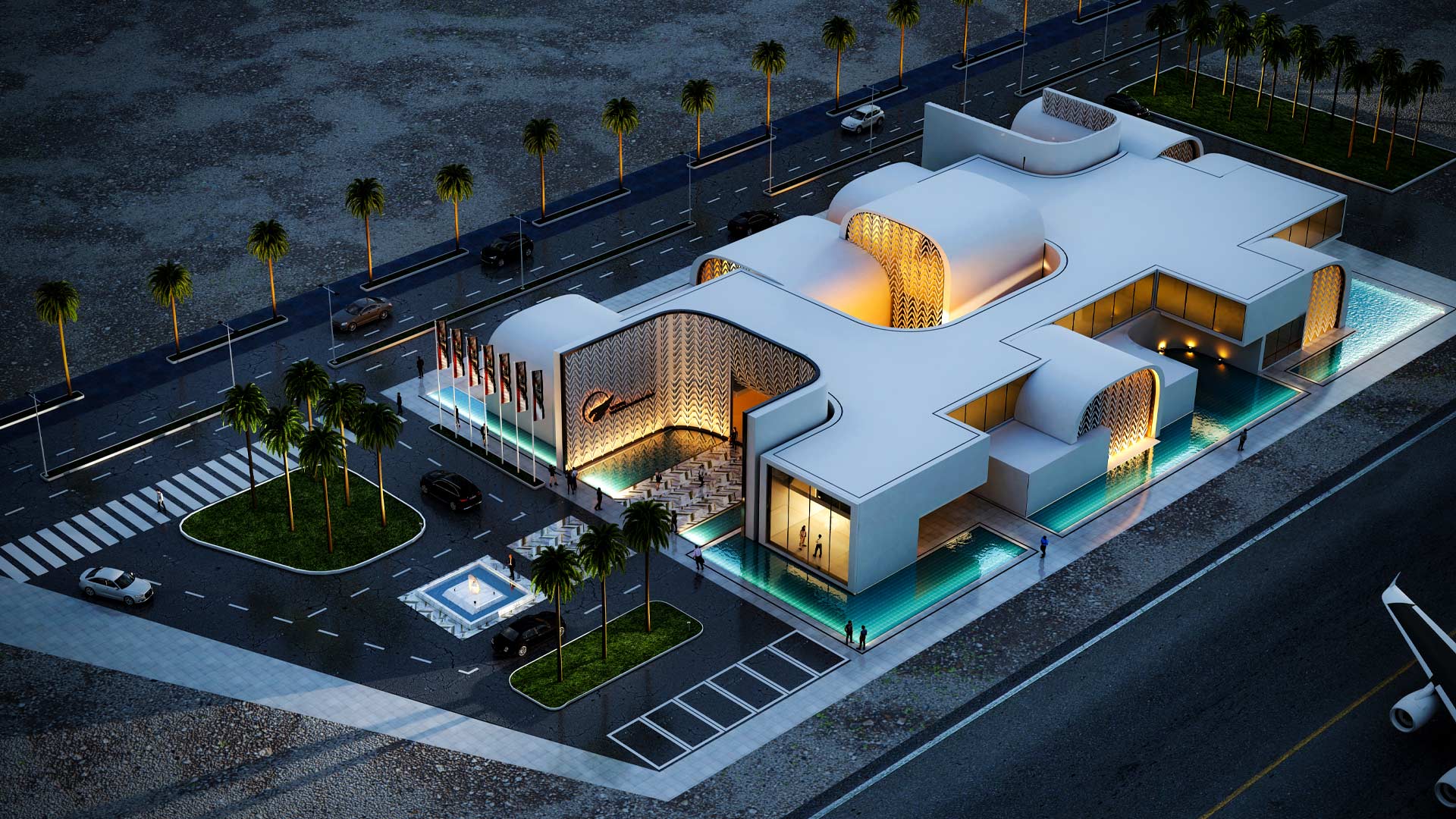
While all materials of a construction are provided by subfield industries, architects are now freer than ever to compose whatever symphony they want with them. Now the architect is the composer of tastes. Taste is then a very good viewpoint for understanding the theory of atmosphere in architectural design. Architects of atmosphere now are talking about the sounds of materials, their tastes, their smell and spatial effect, far beyond its very technical characteristics or texture. If a symphony is composed of spectrums of sound and the harmony between them, an atmospheric space is now deploying all human senses; not the 5 senses in its classic definition but all that there is as a spectrum between these 5 phases of cognitive senses. architects are now seeking to create spatial experiences that oscillate between a visionary image and a hearable symphony, they create textures with lights, spaces with sounds, and sense of place with smell.
Examples of contemporary atmospheres show that we are not concerned with providing the maximum light, as we were in the early decades of the previous century. Now it is the spaces we create with light that matter. Luis Kahn was a master in creating spaces with light. He used geometry in designing ordinary architectural elements of space to achieve light-made spaces. Shapes made from light were the results. Zumthor on the other hand does not seem to be much interested in processing the form in respect of its shape or geometry. He prefers the material as his concern for architectural space. how materials are detailed, especially in their conjunctions is how the architect can express an idea or evoke a feeling in the user. Zumthor uses materials and their detailing to filter lights, to create effects rather than shapes. Effects usually result from repeating patterns some of which are moving and temporary, like the shadows cast by the flora of the near landscape, or lights reflected from moving waves of pools inside concrete boxes.
To design the CIP building in Bagdad Airport, the MESH team first explored the needs and expectations of the project’s employer and came up with a well-developed physical plan from these needs and similar airport buildings elsewhere in the world. Along with understanding the CORE physical program, the design team announced the process of building the structure and DNA of the CIP building.
This DNA which includes the CIP brand personality and the CIP brand positioning and type of performance has been gradually developed to benefit from these visual and environmental CIP studies, audience behavior policies, external volume behavior, and cultural policy in general, CIP architecture and functionality were identified.
After this step according to the identified DNA, CIP atmospheric studies were initiated, and the type of user space experience in the environment was investigated both in terms of 5 senses and in terms of service to the audience.
In the next step the DNA and the atmosphere were identified by space physics based on the specified physical program and DNA which included other considerations, including audio considerations, access filters, space interconnection, Ease of access and guidance for travelers in using the services provided and …
Then at the completion of the layout of the spaces, the plans were expanded and upgraded from two to three-dimensional volumes. At this point the design of the CIP building volume was a matter of concern: it included a fifth or roof view and should have been focused on volume issues. The mythical and mysterious things that happened in Bagdad have a look at the tourist attractions of this old city, Smaller arched buildings have thus become a single, intertwined partially intuitive and intuitive complex that strives to improve the quality of residence in the CIP building with its atmosphere and green space.
One could say that contemporary psychology of space has influenced our perspective of the architectural design, and as a result now we are not merely concerned with visible shape, as it mattered during the previous century. The architects of atmosphere are now searching for feelings that are experienced through using all human senses.
The most recent major shift in built environment psychological studies was to recognize movement of the subject through the space as the base for cognition. Before that there was a static understanding of the process of perceiving things dominant in the field. This static understanding weights only on vision as the medium to realize the space. The recent dynamic theory that gives the privilege to the movement, makes the subject much of a relative nature. This introduction of relativeness challenges the vision as the only sense to be discussed when talking about the environmental psychology.



